The thought of snakes makes some people’s skin crawl.
There are nine snake species you may encounter in Maine. If you are wondering what snake is in your basement or yard or what snake you encountered on your walk today, then continue reading to find out more.
Table of Contents
Is There Any Venomous Snake In Maine?
The good news is that there are no venomous snakes in Maine. The bite from a common gartersnake, while non-venomous to humans, can cause skin irritation, including swelling, redness, and itching.
Types Of Snakes In Maine
The nine snakes you may encounter in Maine include:
1. Ribbon Snake

Ribbon Snakes (Thamnophis Saurita) are common in the central and southern regions of Maine. This non-venomous snake can grow to 35 inches (89cm) and are dark brown with a yellow stripe.
They are semi-aquatic and are usually found in high vegetation areas along marshes, streams, lakes, and rivers. This snake will go into the water and swim away if they are approached.
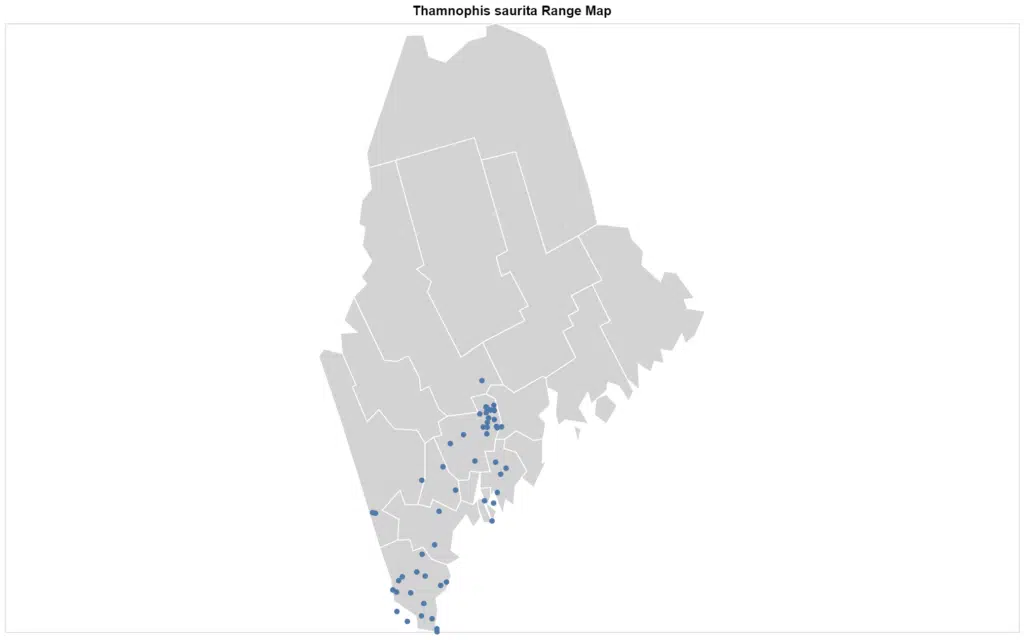
2. Eastern Milk Snake

Eastern Milk Snakes (Lampropeltis Triangulum) can be encountered in the central and southern regions of Maine, where they grow to 36 inches (91cm) with smooth and shiny scales.
They are brown with black edging, some have red or red to brown areas. They have up to five black-bordered brown patches that run down the length of the snake with the base color being tan or gray. They have a black and white checkered pattern on their belly.
These are docile snakes that are very popular for snake enthusiasts and are often bred in captivity for the pet trade.
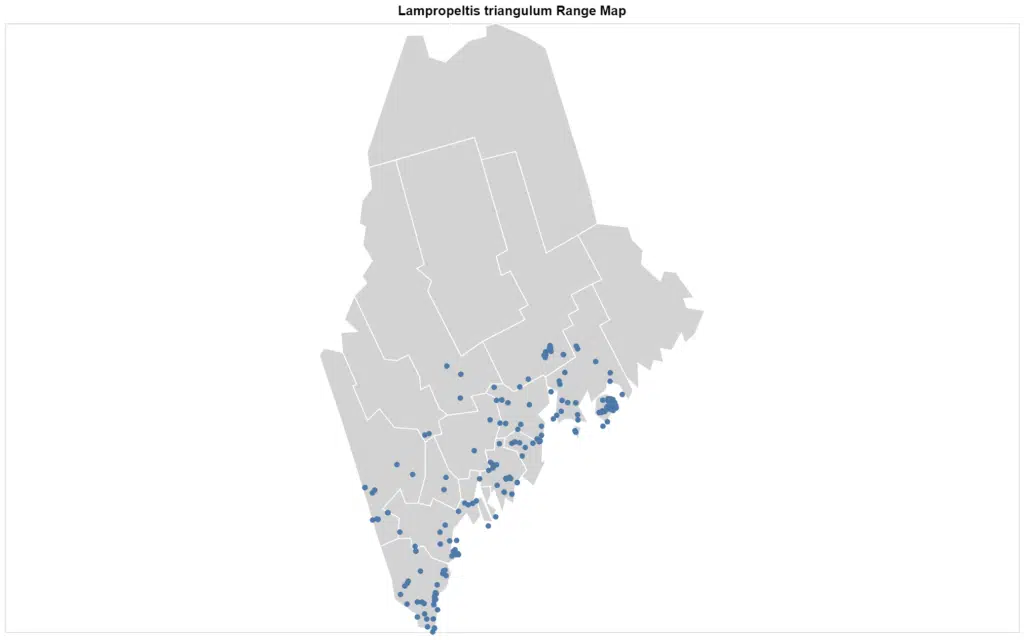
3. Smooth Green Snake

Smooth Green Snakes (Opheodrys Vernalis) are small snakes that can be encountered in the central, southern and easter regions of Maine.
These snakes grow to 26 inches (66cm) in length and are light green with a white or yellow colored belly. They have smooth scales. Young snakes can be olive green to brown until their first shed.
They have a red tongue with a black tip that they use to smell, by flicking the tongue in and out.
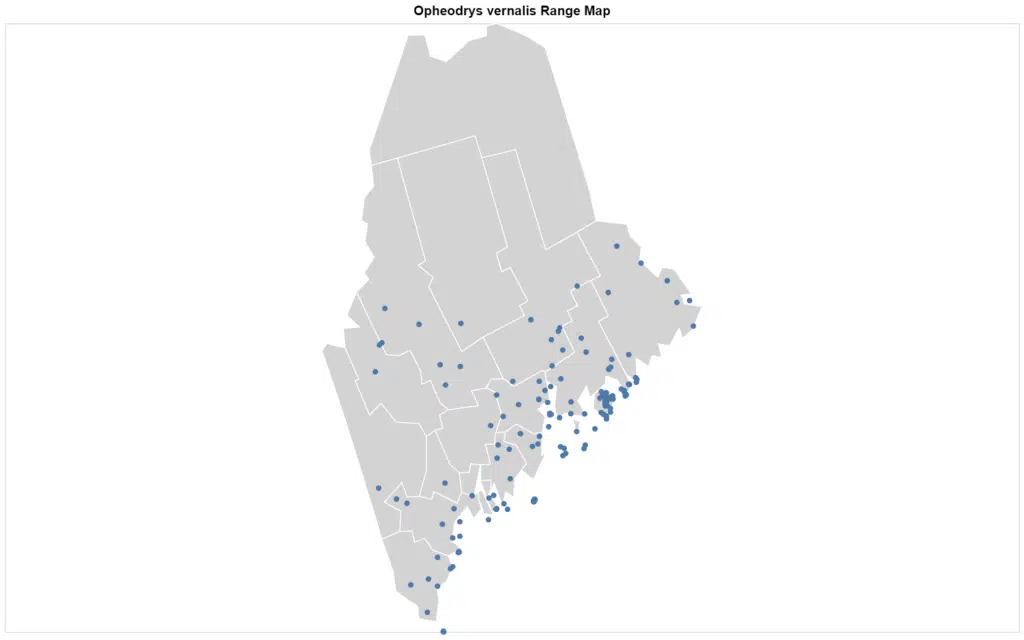
4. Common Watersnake

Common Watersnakes (Nerodia Sipedon) are common in the southern, eastern, and central regions of Maine, where they grow to 4ft 5in (135cm) in length.
Their color can vary from red to black/brown, gray or brown with dark crossbands on the neck and dark patches on the body. The belly can be gray, yellow, or white with red or black crescents.
They are completely harmless to humans.
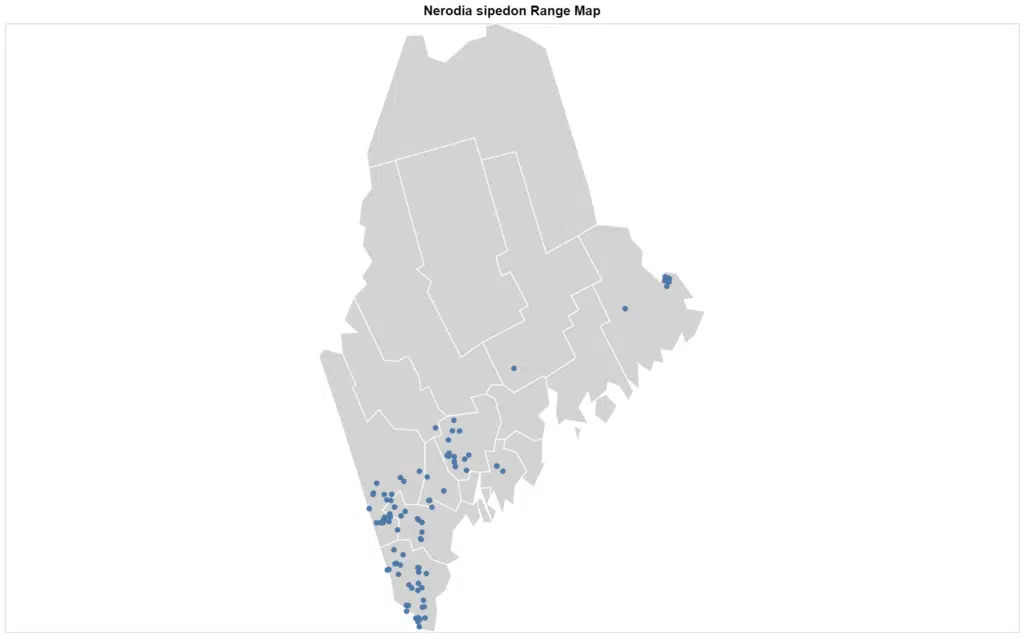
5. Red-bellied Snake

Red-bellied Snakes (Storeria Occipitomaculata) can be found throughout Maine, though they are not as common in the northernmost regions.
They can range from olive to tan or chestnut to gray, black or brown in color. There are three yellow spots on the head. Their belly is coral to brick red in color. Their color varies in shades, usually made of three shades to create a striped pattern.
These snakes can grow to 12 inches (31cm) and prefer moist areas, including gardens, woodlands, wetlands, and flower beds. They hide under rocks and logs near forests and woods.
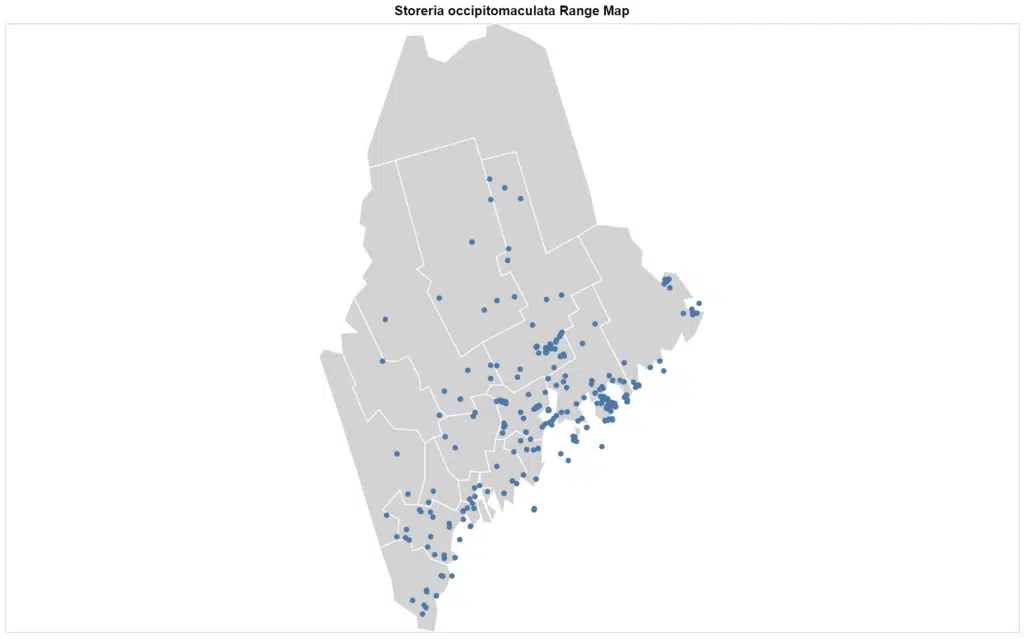
6. Ring-necked Snake

Ring-necked Snakes (Diadophis Punctatus) are common throughout Maine, except in the northernmost regions.
Their color can range from a solid brown to blue/gray to black or olive with a yellow, yellow/orange, or red neckband. Their heads are darker than the rest of the body.
They have a ventral pattern of red or yellow/orange which is broken with crescent-shaped black spots on the margin.
They can grow to 18 inches (46cm) in length.
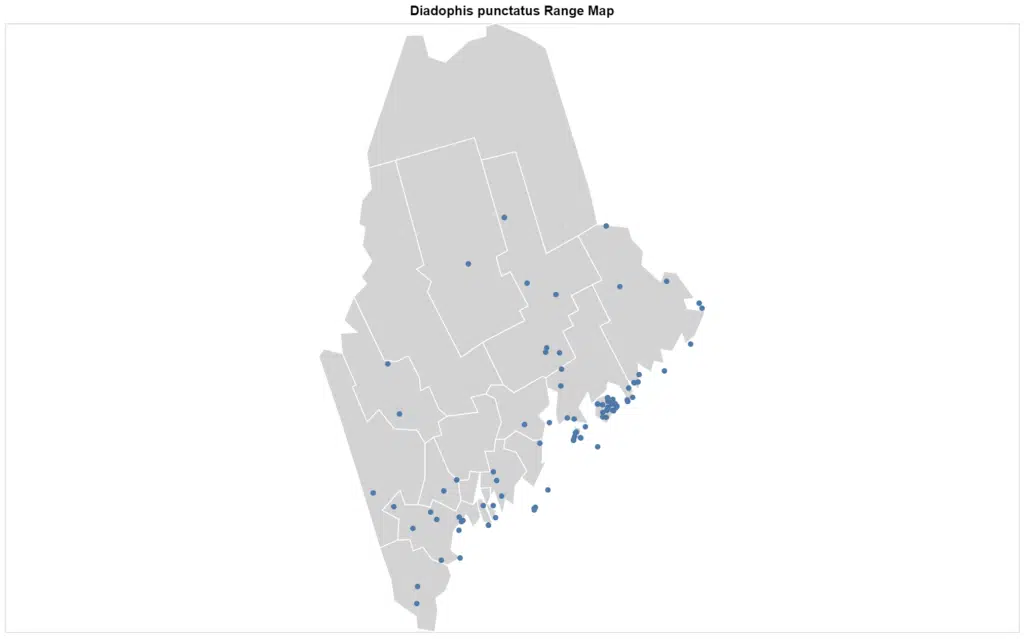
The ring-necked snake enjoys a variety of habitats, though they prefer areas with ample cover. They can be encountered in woodlands, rocky hillsides, and hiding under woody debris.
7. Dekay’s Brown Snake

DeKay’s Brown Snake (Storeria Dekayi) can be found in southwestern Maine and is a gray to brown snake with an alight central stripe that has a border of black spots. The ventral side is light brown or pink with dots at the end of their ventral scales.
They grow up to 12 inches (30cm).
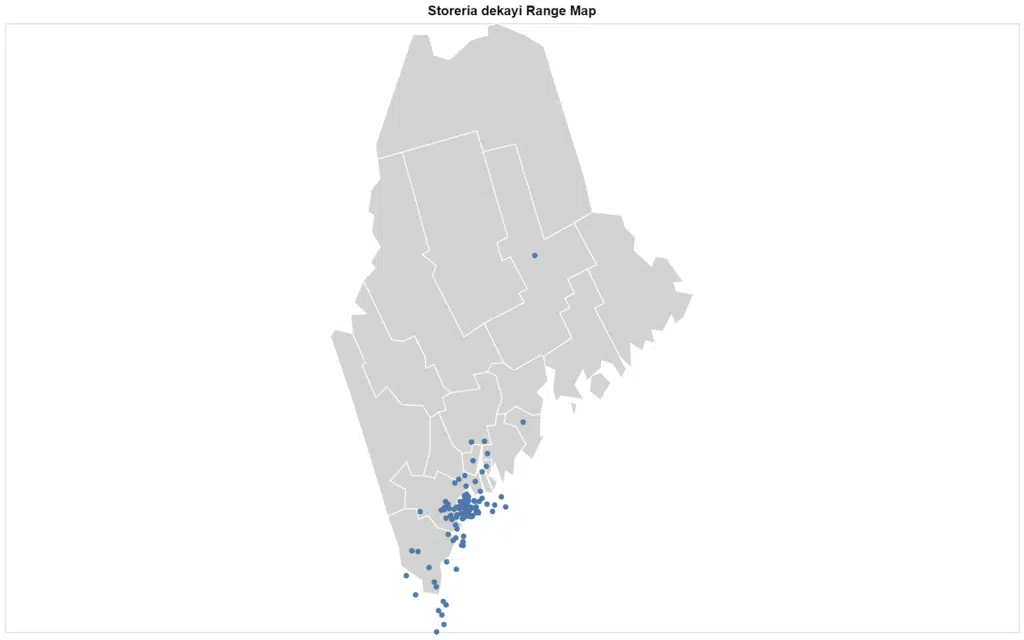
8. Common Garter Snake

Common Garter Snakes (Thamnophis Sirtalis) can be encountered throughout Maine and grow to four feet (1.2 meters) in length.
They come in a host of colors from blue or gold to red, orange, black, brown, and green.
They are mostly active in the mornings and late afternoons. They share dens with other garter snakes.
While considered non-venomous to humans, they do have a toxic venom that can cause an allergic reaction in humans, which can cause swelling, burning, and itching.
They prefer forests and meadows and are often found near water.
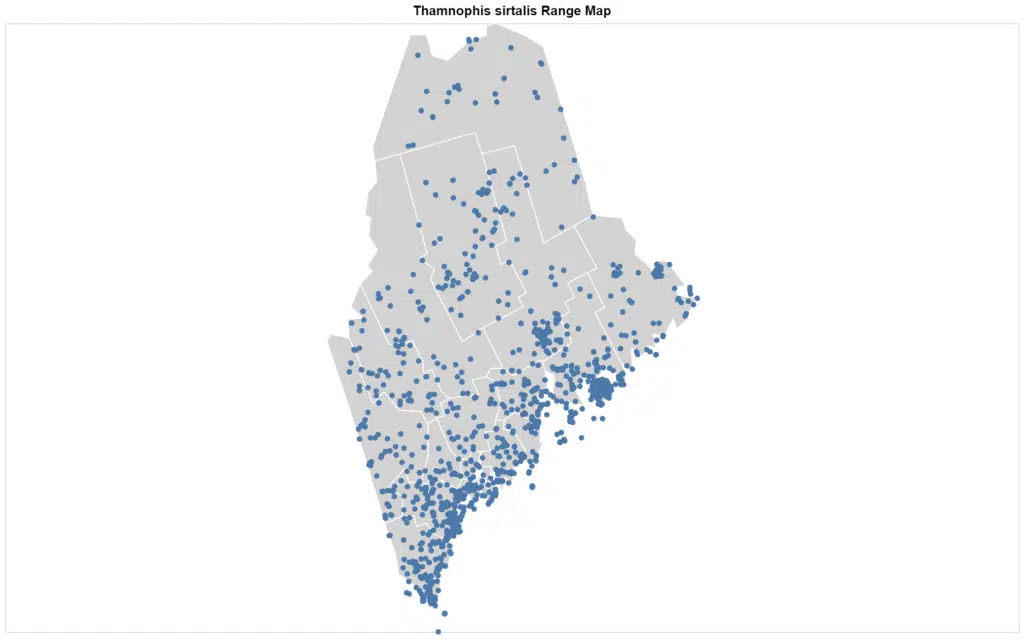
9. Northern American Racer

The Northern American Racer (Coluber Constrictor) is also known as the black racer and is a fast snake.
This snake is only encountered in the southern region of Maine and is considered endangered in the area.
They are black/blue to black with alight color belly. Their throat and chin have white, their belly is dark gray or blue and juveniles are lighter in color, darkening with age.
They grow to five feet in length and are harmless to humans. They are very active during the day. These snakes prefer open areas including fields, pastures, and forest edges.
What To Do If You See A Snake
Thousands of people fear snakes, even though the majority are completely harmless. They are seldom a problem for homeowners, except for the larger snakes which are known to steal chickens and eggs.
Most people will encounter a snake in passing and it’s recommended to leave the snake alone, try and identify the species, allowing it to go on its way.
If you encounter a snake in your yard, leaving it alone will enable it to move on and chances are you will never see it again.
If you encounter a venomous snake, then you will want to take it seriously, especially if it’s in your home or yard. You should remove everyone, including pets from the yard or room where the snake is and call the police or animal control in your area.
Snake in the Home
Discovering a snake in the home can be daunting and it’s advisable to act quickly. You should:
- Remain calm
- Do not disturb the snake
- Open a door and try to gently herd the snake outside
- If the snake is coiled and you know it’s harmless, then empty a wastebasket over it with a weight on top until a professional animal handler is available.
- Confine the snake to the room by closing the door and using a towel to cover the gap.
How To Prevent Snakes
There are several factors as to why you may have a snake in your home or yard. This is determined by where you live, the surrounding landscape, and water sources. If you are finding more snakes around your home than you would like, you can try the following:
- Keep your lawn short. Snakes like long grass to move through and hide in
- Don’t overwater the lawn. Watering the garden attracts worms, slugs, and frogs, which in turn, will attract snakes.
- Keep shrubs and trees trimmed and away from the home. Keep the branches away from the ground.
- Remove any bird feeders. Bird feeders are messy and attract rodents, which then attract snakes.
- Store birdseed in a sealed tin.
- Feed your pets indoors. When you feed them outside you risk the increase of rodents, attracting snakes. If you feed your pets outside, then remove uneaten food immediately.
- Move your firewood away from the home. Firewood is the perfect place for snakes to hide.
- Be cautious when landscaping. Using less mulch and fewer rocks can reduce your yard being welcome for snakes. Avoid koi pond and water features that will attract snakes.
- Seal any cracks you find around your home from foundation cracks to pavement cracks.
- Consider fencing your yard and burying the fence a good few inches under the surface to prevent the snake from digging under the fence to gain access.
Summary
Snakes are not always a bad thing, they can help you eliminate rodents and pests from your yard.
By following the preventative tips listed above, you can reduce the risk of encountering any snakes in your yard or home. The good news is that even if you do come across a snake, the snakes of Maine are harmless to humans and are not considered medical emergencies.